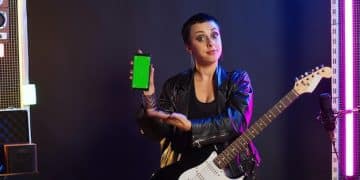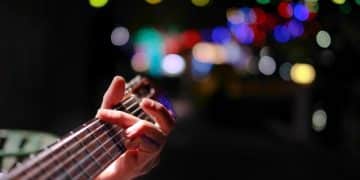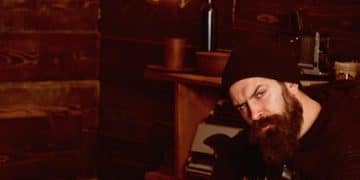Emerging Artists: Funding Your Dreams – Grants & Opportunities in 2025
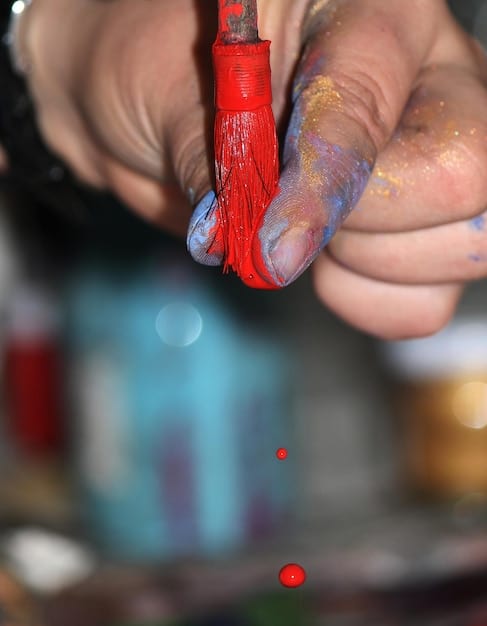
Emerging Artists seeking financial support in 2025 have access to a variety of grants and opportunities designed to fuel their creative projects, offering crucial resources for artistic development and project completion.
Are you an emerging artist with a groundbreaking project in mind but struggling to secure the necessary funding? The landscape of grants and funding opportunities in 2025 is ripe with possibilities for artists like you, ready to support innovative and impactful work.
Understanding the Funding Landscape for Emerging Artists
Securing funding can often feel like navigating a complex maze. However, understanding the different types of funding and where to find them is the first step towards realizing your artistic vision. This section will provide you with an overview of the funding environment, helping you identify the opportunities that align with your project and goals.
Types of Funding Available
There’s a wide array of funding sources available for emerging artists. Here’s a brief rundown of some common types:
- Grants: Typically awarded by government agencies, foundations, or corporations, grants are usually non-repayable and aimed at supporting specific projects or artistic development.
- Fellowships: These are often merit-based awards providing financial support for a specific period, allowing artists to focus on their work without financial constraints.
- Residencies: Residencies offer artists space, time, and often stipends to create work in a supportive environment, fostering creativity and collaboration.
- Crowdfunding: Platforms like Kickstarter and Indiegogo allow artists to raise funds directly from their audience, building community support for their projects.
Navigating the Application Process
The application process can be daunting, but preparation is key. Start by understanding the eligibility criteria, deadlines, and required materials. Tailor your application to each specific opportunity, highlighting how your project aligns with the funder’s mission and priorities.
In conclusion, gaining a clear understanding of the funding landscape is crucial for emerging artists. By identifying suitable funding types and diligently navigating the application process, you can increase your chances of securing the resources needed to bring your creative projects to life.

Identifying Grants Specifically for Emerging Artists in 2025
Identifying the right grants is crucial. Many grants are specifically designed for emerging artists, offering vital support during the early stages of their careers. This section highlights specific grants and opportunities tailored for artists who are just starting out or transitioning to a more professional level.
Key Grant Programs to Watch
Several grant programs consistently support emerging artists across various disciplines:
- The Pollock-Krasner Foundation Grant: Supports visual artists with demonstrable financial need, providing funding for painting, sculpture, and works on paper.
- The Joan Mitchell Foundation Emerging Artist Grants: Offers unrestricted funds to emerging painters and sculptors, fostering artistic growth and recognition.
- The Elizabeth Greenshields Foundation Grant: Provides financial assistance to young artists pursuing representational art, allowing them to develop their skills and build their portfolio.
Online Databases and Resources
Utilize online databases and resources to efficiently search for relevant grant opportunities. Websites like GrantWatch, the Foundation Center, and NYFA Source offer comprehensive listings of grants, fellowships, and residencies for artists.
In essence, identifying grants specifically tailored for emerging artists is a critical step in securing funding. By exploring key grant programs and utilizing online databases, artists can find the support needed to advance their careers and bring their creative visions to fruition.
Crafting a Compelling Grant Proposal
A compelling grant proposal is your opportunity to convey the significance of your project and demonstrate your capability to execute it successfully. This section provides guidance on crafting a proposal that stands out to funders, highlighting your artistic vision, project feasibility, and potential impact.
Essential Components of a Grant Proposal
A strong grant proposal typically includes the following elements:
- Executive Summary: A concise overview of your project, its goals, and its significance.
- Project Description: A detailed explanation of your project, including its objectives, methodology, and timeline.
- Artist Statement: A personal reflection on your artistic practice, motivations, and the unique perspective you bring to your work.
- Budget: A realistic breakdown of project expenses, including materials, equipment, travel, and artist fees.
- Work Samples: High-quality images, videos, or recordings that showcase your artistic skills and the potential of your project.
Tips for Writing a Winning Proposal
To increase your chances of success, consider the following tips:
- Research the Funder: Understand their mission, priorities, and past funding recipients.
- Be Clear and Concise: Use straightforward language and avoid jargon.
- Tell a Compelling Story: Engage the reader with your artistic vision and the potential impact of your project.
- Proofread Carefully: Ensure your proposal is free of errors in grammar, spelling, and formatting.
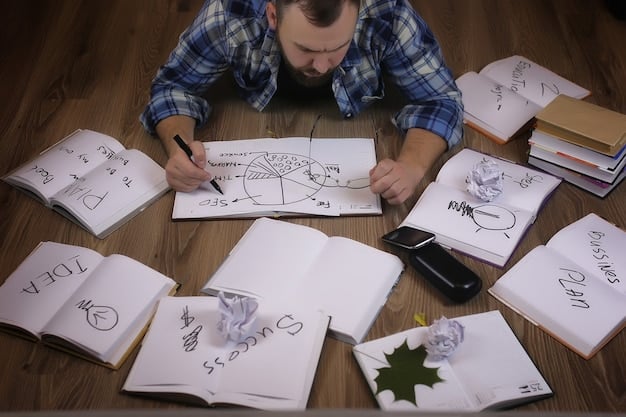
Navigating the Digital Landscape for Art Funding
The internet provides a wealth of resources and platforms for artists seeking funding opportunities. This section explores how to leverage online tools and platforms to discover grants, connect with funders, and promote your work.
Using Social Media to Your Advantage
Social media can be a powerful tool for networking and self-promotion. Create professional profiles on platforms like Instagram, Facebook, and LinkedIn to showcase your work, connect with fellow artists, and engage with potential funders.
Consider creating a website or online portfolio to serve as a central hub for your artistic identity. Include high-quality images of your work, your artist statement, your resume or CV, and contact information.
Online Grant Databases and Aggregators
Several online databases and aggregators specialize in listing grant opportunities for artists. These platforms allow you to filter grants by discipline, location, and funding level, making it easier to find opportunities that align with your specific needs.
To summarize, navigating the digital landscape effectively is essential for artists seeking funding in the modern age. By leveraging social media, creating an online portfolio, and utilizing online grant databases, artists can expand their reach, connect with funders, and increase their chances of securing financial support for their projects.
Building a Sustainable Funding Strategy
Having a long-term funding strategy is crucial for sustained artistic success. This section encourages artists to think beyond individual grants and to develop a diversified approach to securing financial resources for their careers.
Diversifying Your Income Streams
Relying solely on grant funding can be risky, as it is not always guaranteed. Explore alternative income streams to supplement your grant funding and create a more sustainable financial foundation for your artistic practice.
Cultivating Relationships with Funders
Building relationships with funders can increase your chances of securing support in the long term. Attend grant information sessions, network with program officers, and keep funders updated on your progress.
In conclusion, developing a sustainable funding strategy is vital for artists seeking long-term success. By diversifying income streams and cultivating relationships with funders, artists can build a resilient financial foundation that supports their creative work for years to come.
Case Studies: Successful Artists and Their Funding Journeys
Examining how other artists have successfully secured funding can offer valuable insights and inspiration. This section presents case studies of emerging artists who have navigated the funding landscape effectively, highlighting their strategies and best practices.
Case Study 1: A Visual Artist’s Grant Success
Sarah, a visual artist specializing in mixed-media installations, successfully secured a Pollock-Krasner Foundation Grant to support her upcoming exhibition. She had a clear project concept, a strong portfolio, and a compelling artist statement that articulated her unique perspective.
Case Study 2: A Filmmaker’s Crowdfunding Campaign
David, an independent filmmaker, successfully raised funds for his debut feature film through a crowdfunding campaign on Kickstarter. He created a visually appealing campaign page, offered enticing rewards, and engaged his audience through social media.
To summarize, learning from the successes of other artists can provide valuable insights into the funding landscape. By studying case studies and adapting successful strategies to their own circumstances, artists can increase their chances of securing the resources needed to bring their creative visions to life.
| Key Point | Brief Description |
|---|---|
| 💡 Grant Programs | Explore Pollock-Krasner & Joan Mitchell grants. |
| 🌐 Online Resources | Use GrantWatch & Foundation Center for listings. |
| ✍️ Grant Proposal | Highlight project goals, timeline, and budget. |
| 📢 Social Media | Promote work & connect on Instagram and LinkedIn. |
FAQ: Securing Funding for Emerging Artists
▼
Common sources include grants from foundations and government bodies, fellowships providing stipends, residencies offering workspace, and crowdfunding campaigns engaging audiences.
▼
Highlight your unique artistic vision, explain the project’s impact, tailor your proposal to the funder’s mission, and ensure a clear, concise, and error-free presentation.
▼
Your artist statement should reflect your artistic practice, motivations, the unique perspective you bring, and how your work contributes to the broader cultural conversation.
▼
Work samples are crucial as they showcase your artistic skills and the potential of your project. Ensure they are high-quality, relevant to the proposal, and represent your best work.
▼
Social media can help by showcasing your work, connecting with fellow artists and potential funders, engaging with your audience, and promoting your projects to a broader audience.
Conclusion
In conclusion, securing funding as an emerging artist in 2025 requires a multifaceted approach that includes understanding the funding landscape, crafting compelling proposals, leveraging digital tools, and building sustainable strategies. By embracing these principles, artists can unlock the resources needed to realize their creative visions and achieve sustainable success.
